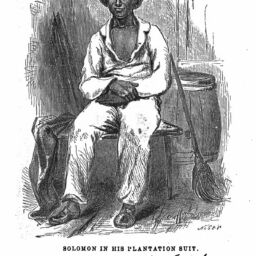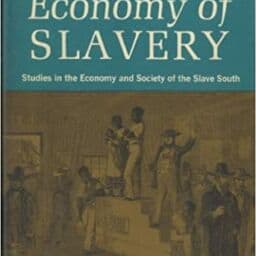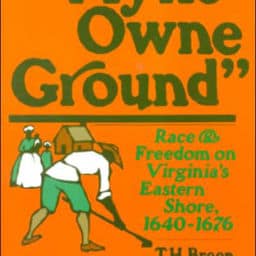Eaton, Clement. The Growth of Southern Civilization, 1790-1860: . New York: Harper, 1961.
1. Thesis: The pre-Civil War South is typically portrayed as monolithic culture filled with a romanticized plantation lifestyle is not the accurate portrayal (i.e. the South was not full of white, pristine tranquil plantations, refined southern gentlemen nicknamed “colonel” and charming southern belles who sipped mint juleps in dresses in gardens all day, etc.) To the contrary, the old South is a slow, inevitably evolving diverse civilization.
2. Structure: Eaton uses a variety documents and writings from people of the period, European visitors, former historians, court documents, wills, deeds, textbooks, estate inventories, manuscript census returns, personal diaries (owners, wives, planters) and more to develop the text. He explores the full prism of the southern society, including the land and economy of the South, the growth of the plantation society, the peculiarities of the Creole civilization, the emergence of a middle class, an “enlightenment” of the upper South, the spark of a new business class, and an examination of the Southern mind.
3. Evidence to support thesis of myth vs. reality:
- Land/Expansion – Westward expansion led to population drain/shifts in societal structure from East (p.31-44) / absentee plantations in the hands of overseers (p.43) / profits of slavery relied on continued expansion over time for new soil which would create ongoing slave demand (natural limits – p.70) / early stage planters would abandon lands to move west for better soil, but later, maturity of the plantation came from better cultivation, education, sense of order and permanency (p. 107)
- Cotton/Slavery – “Cotton is King” (p.25) – three-quarters of the world’s cotton (p.28) / “placed material profits above human rights” (p.48) / slave trade as a business unto itself – surplus of slaves (p.49-63) / less than half of slaves worked in fields – “the idealized legend of the plantation is based largely on the relations between planters and their house servants rather than their field hands” (p. 55)
- Plantation Society vs. Town Society – elite “English country gentleman” vs. backcountry variety of non-English descendants (p. 1-8) / “In the towns are found decent and well-informed men in matters of business, men who look well and live well. But the mass of the common people in the country are lazy, sickly, poor, dirty and ignorant” (p.12) / serenity of “plantation-Greek” style of plantation home architecture (depicted in today’s movies – p.118/124) / towns overlooked/seaboard town decay/corrupt town governments, streets in bad shape, problem with pure water/artesian wells, health epidemics, fires, gas lighting street lamps, free public schools, public library expansion, preaching v. theatre, entertainment in form of Negro minstrels, rise of newspapers and “personal journalism” (Ch. 11) / town residents closer to Northern values (p. 270)
- The Creoles – A different set of people from other Southerners – different traditions/values (p.125) / colorful part of the South (p.127) / mix of Negro, Canadian/Cajun, French-speaking, Catholics, Santo Domingo planters, French Napoleonic exiles, offspring of Spanish settlers (p.128) / led a “life of sensation and careless enjoyment” (p.130) / did not migrate West as others did – subdivided lands to offspring / “everything here makes money, at every business” (p. 131) / “Nobody likes to work…all depend upon the negroes” – little concept of value of time – didn’t participate in American ventures – wanted to return to French control / benevolent towards slaves (p.129-140) / Creole law based on Roman law (p. 148) / transient society
- Emerging Industry/Business/Middle Class – the yeoman – most common agricultural unit was the farm, not a plantation (p.154) – enclosed fields, majority did not own slaves (p.158) / mechanics, tradesmen, bankers, brokers – could not form unions easily – competition of slave/free labor / lowest class – “poor whites” (poverty, no slaves, poor soil, squatters – victims of their environment – looked down upon) / poor whites wanted expansion for more lands to increase upward social mobility (p. 174) / use of poor whites in factories & mills (William Gregg – p.173/propagandists – p.245) refinements of agriculture (p. 112) / flirtations with use of slaves in industry / began to slowly modernize (p.195) / growth of merchant class/”factors” (p. 200-205) / growth of state railroad systems – crop transport (p. 208) / state banking (p. 208) / coal and iron, gold mining, copper, lumber, salt, cotton gin factories (p.233) /
- Religious Ideologies/Dependencies – “To a far greater degree than today, religion played a significant role in their lives, a faith that imposed on them an acceptance of the inscrutable ways of Providence.” (p.124) / “God has made him a little better than those who have the misfortune to be born poor” (upper class Kentuckians p. 190) / religious rationalization of slavery / differences in westerners vs. easterners over slavery (west = slavery threatened peace and retarded progress for whites/ east = slavery good (plantations)
- Pro-Slavery Arguments (not about property loss or a “control” issue as typically portrayed) – Aristotle/Greek slavery “recognized the natural inequality of man in an organic society” / Africans better suited for climate / Prior experience with free negroes yielded observations of laziness, shiftlessness and criminal inclination / sanction of the Bible by literal interpretation (all from p. 305)
- The Southern Mind – “Southerners loved politics, spoke their minds,…and enjoyed a free press during the period of the early republic” (p. 23) / social justice impediments (wealth/oratory could get you off, bloody codes in NC, the country poorhouse, etc.) and improvements (no more imprisonment for debt, variation/reduction in capital punishment, care for the deaf/blind, temperance movement (Ch. 12) / multiple ‘South’s, not just one dimension or single theme (p.296), simply didn’t know each other (North/South – p.298) / protection of personal property/pride/honor – therefore slavery “must be done gradually” (p.299) / idealists like Edward Coles who freed all his slaves and gave them land / anti-slavery institutions (Methodists and Quakers) in South / Fitzhugh – North heading towards socialism – slavery protects whites and negroes from it (p.307) / Calhoun and dangers of unchecked rule (p. 308) / South becoming more democratic by Civil War
4. Convincing/Criticisms? This is undoubtedly one of the most detailed accounts of Southern civilization. The copious amounts of material evidence used throughout the book show that the author went to extraordinary lengths to build a complete, all-encompassing and accurate picture of the pre-Civil War South. This is also my biggest criticism, as this was also the most tedious book to read of the series. I know that I will need to re-read this at least one more time to absorb missed items. It, however, completely changed my mind about my generalized view of the old South.



